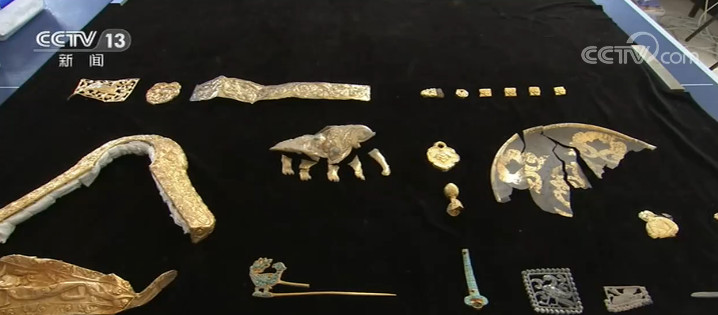 |
[Photo/CCTV] |
Over 1,000 artifacts have been unearthed at a tomb site in Northwest China's Qinghai province, indicating the province used to be a pivotal hub on the ancient Silk Road, archaeologists said.
The find in the Xuewei No.1 Tomb, part of the Reshui Tombs in Dulan county, includes silverware, glass and textiles.
The craftsmanship and design of some delicate artifacts unearthed in the tomb have Central and West Asian ethnic features, said Han Jianhua, associate researcher with the Institute of Archaeology under the Chinese Academy of Social Sciences.
The multi-chamber tomb is a wood and rock structure consisting of two parts: a ground level and an underground level. A long sacrifice pit was found in the tomb, where horses, cows, antelopes and yaks were buried, said Han.
"The Xuewei No.1 Tomb is the most structurally intact tomb ever unearthed on the Qinghai-Tibet Plateau," said Han, adding that the tomb is of great value for the study of burial customs in the area, the relationship between the Tang Dynasty (618-907) and ethnic minorities, the history of Silk Road transportation, and goods and cultural exchanges at that time.
"Judging by the artifacts, we believe this tomb can date back to the middle of the eighth century," said Han. "It was a high-profile tomb, perhaps belonging to someone at the level of a tribal chief."
Discovered in 1982, the Reshui Tombs date back to between the sixth and eighth centuries, and are located on both sides of the Qagan Us River at an altitude of 3,400 to 3,500 meters.